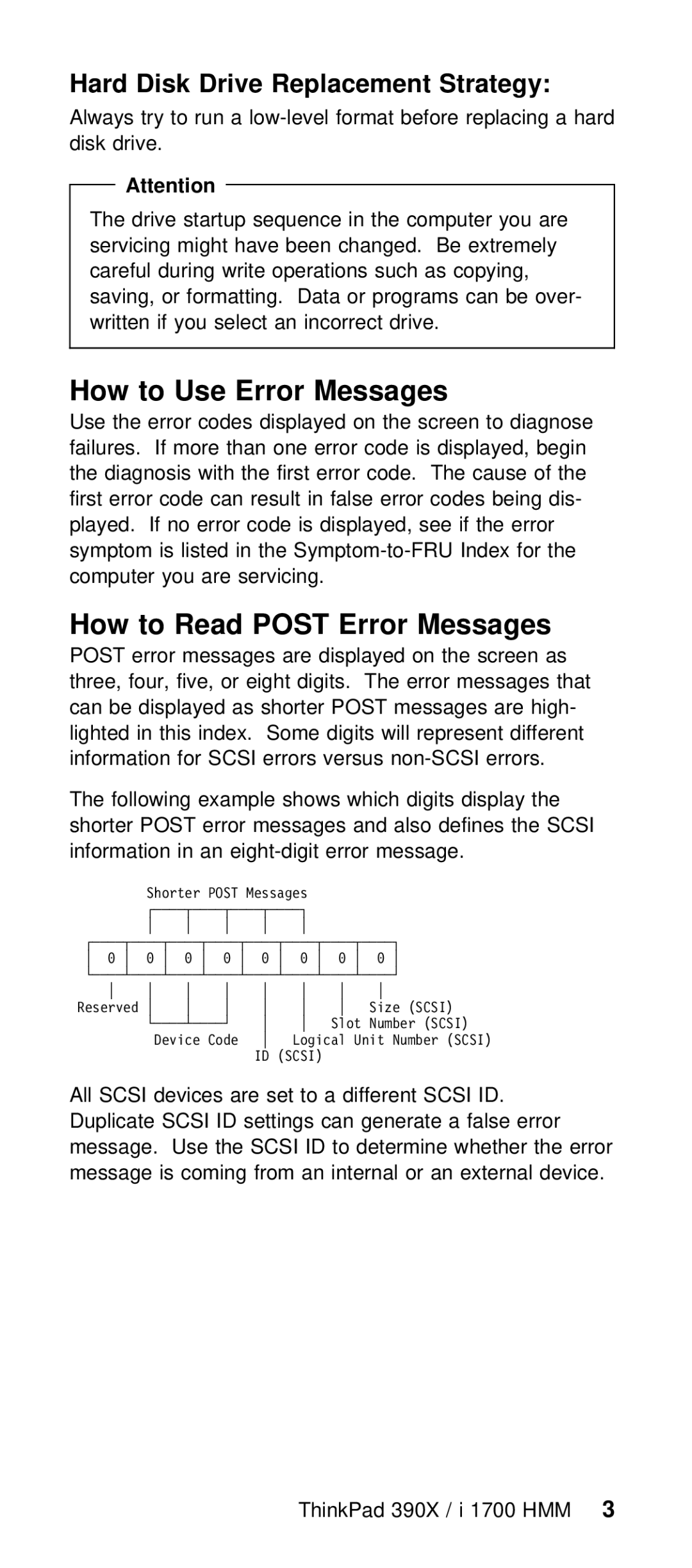
Hard Disk Drive Replacement Strategy:
Always try to run a
Attention
The drive startup sequence in the computer yo servicing might have been changed. Be extremely careful during write operations such as copyin saving, or formatting. Data or programs can be written if you select an incorrect drive.
How to Use Error Messages
Use the error codes displayed on the screen failures. If more than one error code is displ the diagnosis with the first error code. The c first error code can result in false error cod played. If no error code is displayed, see i symptom is listed in the
How to Read POST Error Messages
POST error messages are displayed on the screen three, four, five, or eight digits. The error can be displayed as shorter POST messages are lighted in this index. Some digits will represent information for SCSI errors versus
The following example shows which digits display shorter POST error messages and also defines the information in an
| Shorter POST Messages |
|
| ||||
|
|
| |||||
| + | + | + | + | + |
|
|
+ ð + | ð + ð + ð + ð + ð + ð + ð + | ||||||
,3333"3333"3333"3333"3333"3333"3333"33332 | |||||||
+ | + | + | + | + | + | + | + |
Reserved | + | + | + | + | + | + | Size (SCSI) |
| ,3333"33332 | + | + | Slot Number (SCSI) | |||
|
| Device Code | + | Logical Unit Number (SCSI) | |||
|
|
|
| ID (SCSI) |
|
| |
All SCSI devices are set to a different SCSI I Duplicate SCSI ID settings can generate a false message. Use the SCSI ID to determine whether message is coming from an internal or an external
ThinkPad 390X / i 1700 3 HMM
